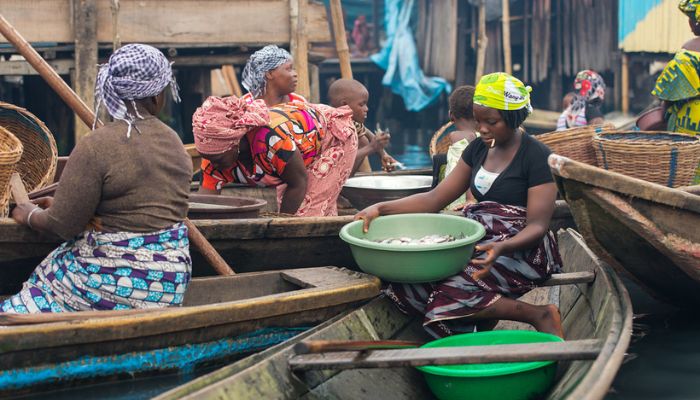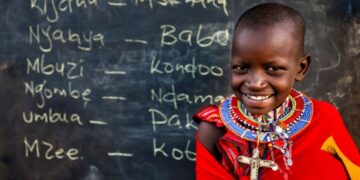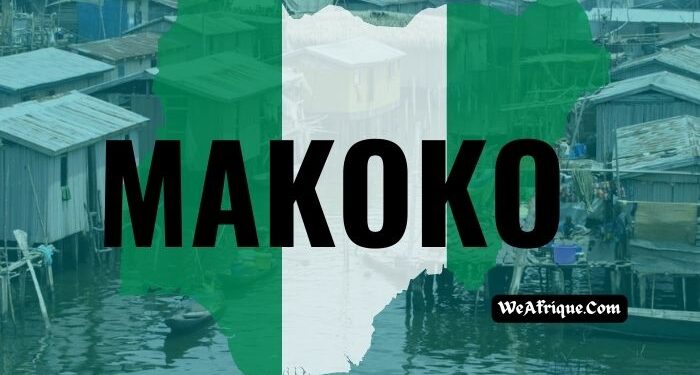Slums are found all over the world but floating slums are pretty rare. This article will look at the largest floating slum in Africa, called Makoko. Makoko is located in the eastern part of Lagos, the most populous city in the most populous country in Africa.
Makoko is dated back to the 18th century, it started off as a fishing village and over the years, generations have come and gone and some of its population know only there as home. However, in the nearest future, this floating slum might just be the next tourist attraction.
Interesting Facts About Makoko
1. It is also called the “Venice of Africa”
Makoko is sometimes referred to as the Venice of Africa. This is owed largely to its location. It is located beneath the 3rd mainland bridge, one of the longest bridges in Africa, which stands above the Lagos Lagoon.
It is called the “Venice of Africa” because of its similarities to the actual Venice which is known for its numerous canals. Just as Venice is built on water, so also is Makoko, the floating slum. However, some parts of Makoko sit on the land.
2. It Started as a Fishing Village
The floating slum of Makoko started as a fishing village where fishermen from the neighboring countries of Togo and Benin Republic come to fish and return to their homes, but about a century ago, these fishermen decided that they would rather live there than come visit.
As years roll by, it became home to them. Some of the residents of Makoko do not any anywhere else as home but the floating community. The community is highly diverse just like Lagos states and has a mix of French, Egun, and Yoruba local dialects.
3. Makoko Has a Population of over 400,000 People

Even though the world bank estimates that the population of Makoko is over a little over 85,000, the chief of Makoko, known as the Baale, has said that the population of Makoko is over 400,000 people. The majority of these people come from the Egun tribe of Benin and Badagry.
Subsequently, there hasn’t been any official count of the community because it is an illegal settlement, hence, non-existent to the government.
4. The Community Lacks Basic Amenities
Things that seem basic and mundane to the rest of the state, are not found in this community. Makoko lacks basic amenities like roads or a transport system, schools, healthcare, and electricity. The waste disposal system of the community is almost non-existent as the residents of this community dispose of their excreta straight into the water.
Their security is also not provided for by the government seeing as they are an illegal settlement, so the residents of the area practice community policing.
5. There are Only Two Schools in Makoko
As surprising as this may seem, there are only 2 schools in the whole community housing over 400,000 people. One of these 2 schools is located on the land area of the community, and the other on the water part. The school on land is built with bricks while the one on the water is built with wood.
As a result, 5 in every 20 people below the age of 30 in Makoko are stark illiterates, while every 14 are educated between primary to secondary levels.
6. There is a High Fertility and Maternal Death Rate in the Community
There is a high fertility rate in Makoko, possibly due to the high illiteracy rate. Sadly, as high as these fertility rates are, there are as high rates of maternal deaths. Pregnancy has ended in tears for many households in this community.
The rate of maternal deaths is due to the lack of health facilities. The chief of the community noted that each household in the floating slum has lost a member due to pregnancy or childbirth-related issues. Most times the residents of this community lose their lives before they get to the closest Federal Medical Center which is in Ebute-Metta and is always overflowing with patients.
7. Fishing is the Main Source of Livelihood for the Residents of Makoko
Being a fishing village in the past, the fishing tradition has been passed down to generations and has become the main source of livelihood for the people of the floating slum. Some types of seafood that can be found in Makoko markets include croaker, barracuda, shiny nose, red snapper, prawns, and crabs. All these are found in large quantities and sold at relatively low prices.
Sadly, the waters of Makoko have become so polluted that it is becoming difficult to get a lot of fish, hence, a decline in their economy. A day’s catch in Makoko amounts to an average of only $2 dollars daily which makes life increasingly difficult for the people of this community. Other professions of people in the slum include salt making and sawmills.
8. The Canoe is More than a Means of Transportation in Makoko
The major and only source of transportation in this slum is through the canoe in the murky waters of Makoko. However, transportation is not the only use of the canoe in this floating slum. The canoes are also used as either mobile or static shops in this community, where they sell water, food, and other household products.
9. The People of Makoko have Been facing Eviction for over a Decade
Since 2012, over 200 people were displaced after a demolition exercise by the government of Lagos state. The residents of this community were barely given a 72-hour notice before the demolition.
The government of the state said that the residents of the community were causing an environmental nuisance and posed a security threat to the people of the state. They also added that the government wanted to utilize the waterfront, as the floating slum was not part of the state government’s plans.
See Also: 10 Shocking Beauty Practices Across Africa
10. The Urbanization of the Floating Slum is Underway
After the demolition of parts of the slum in 2012, the people of Makoko have been pleading with the government to allow them to live in their community as it is the only home known to most of them.
The government of Lagos state through the Ministry of Physical Planning and Urban Development has agreed to reach a meeting point with the community. They have decided to collaborate with the communities of the waterfront to create and implement an urban upgrading plan that will create housing, tourism opportunities, economic development, funding strategies, and an institutional framework for the floating slum.




















